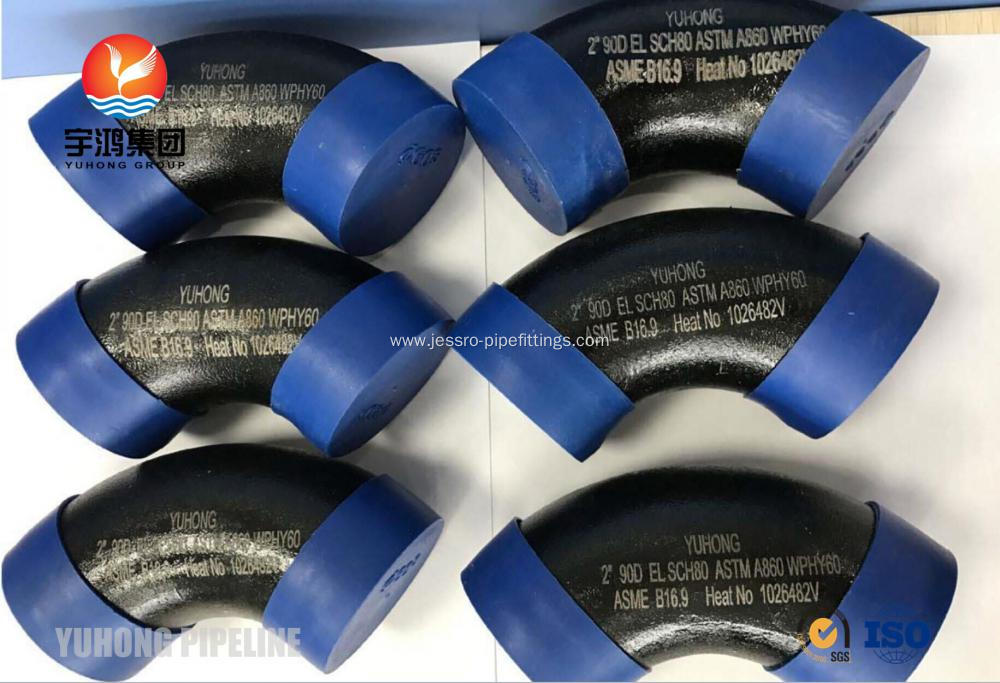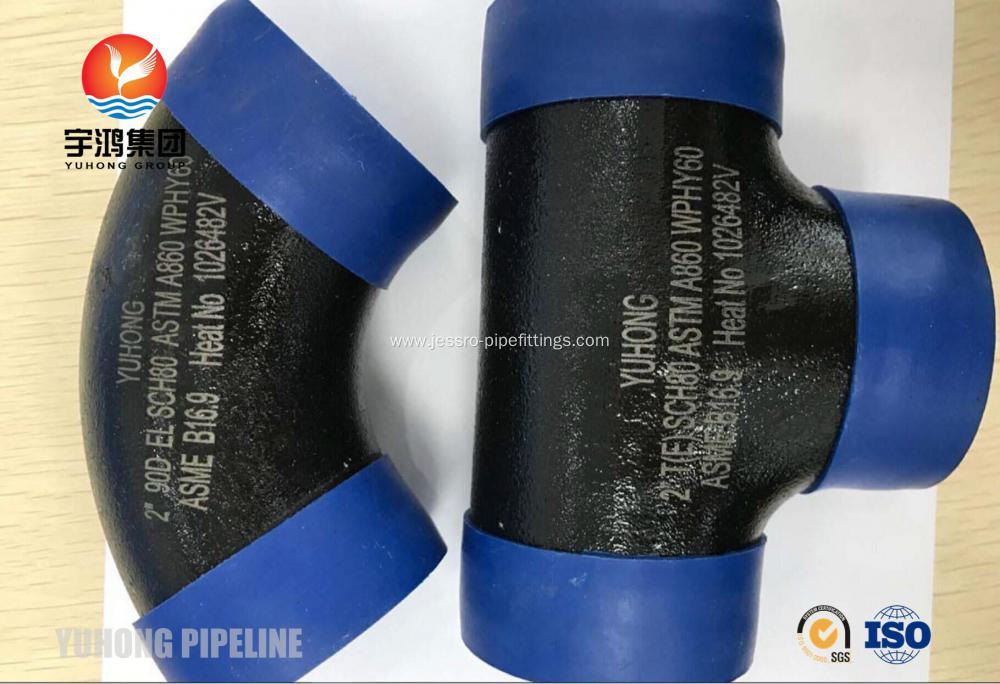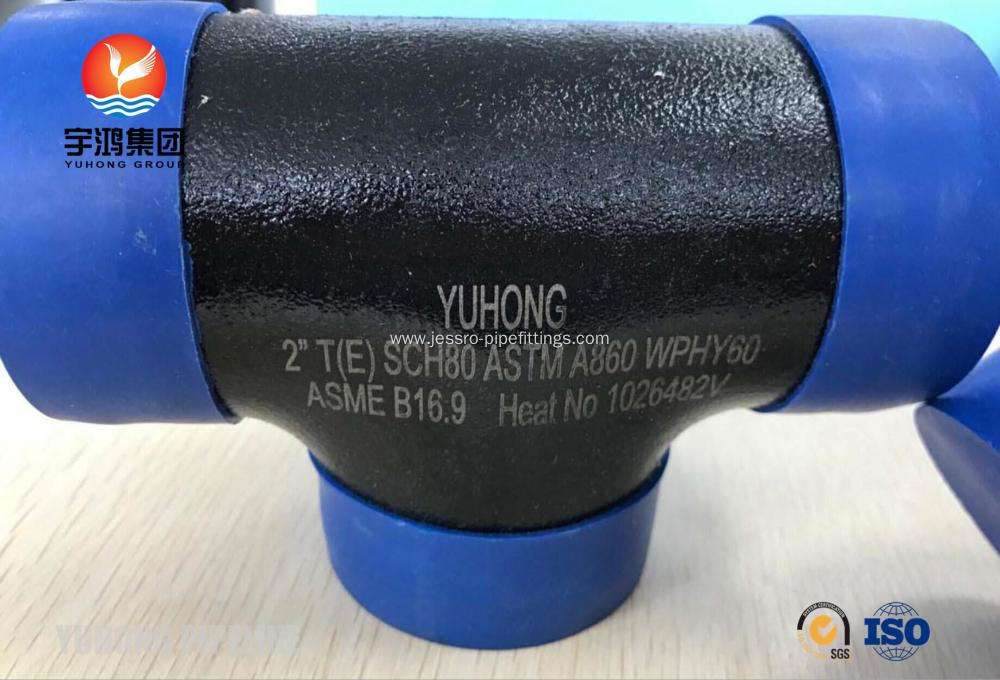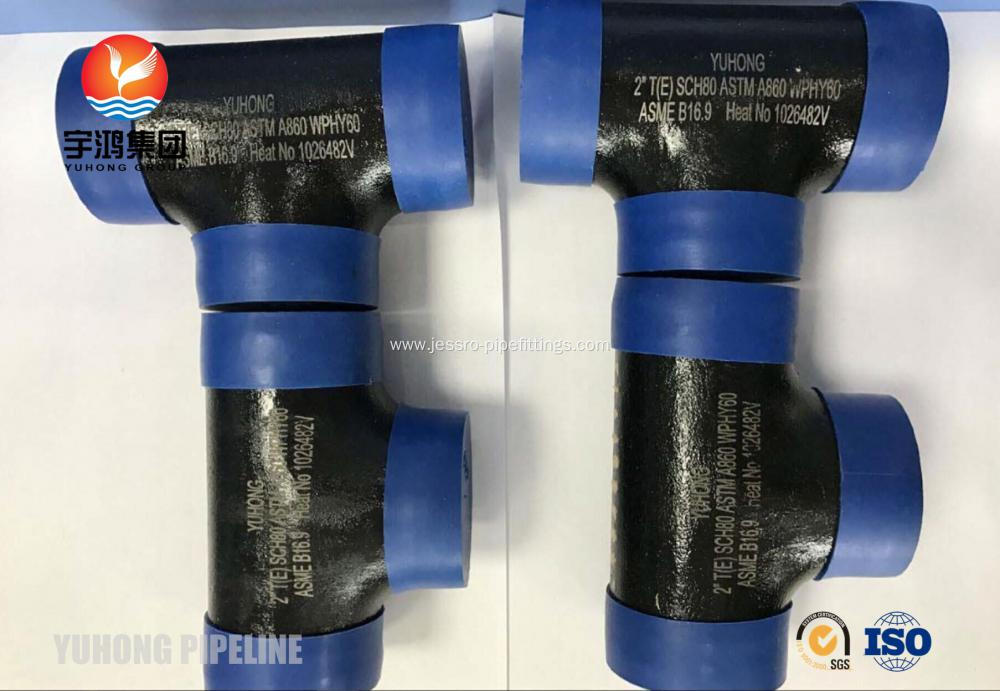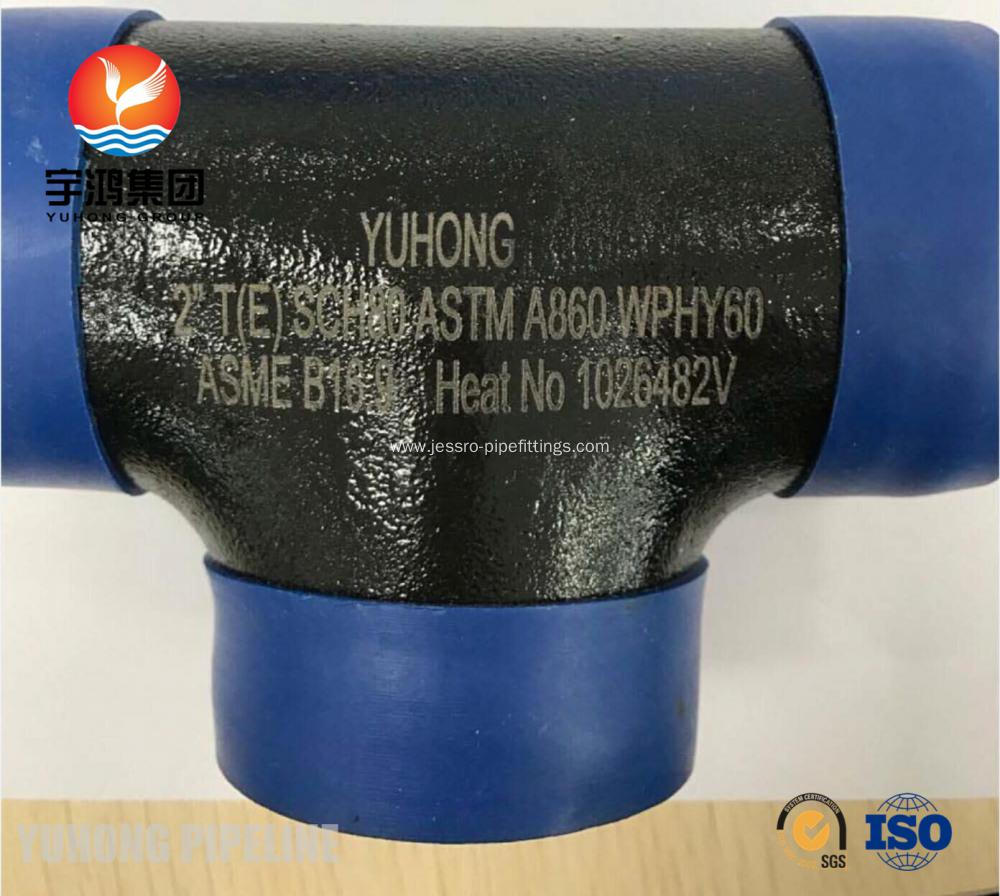ASTM A420 WPL 6 / WPL3 , ASTM A860 WPHY42, WPHY46, WPHY 52, WPHY 60, WPHY 65, WPHY70 FOR PIPLINE APPLICATION
Pressure Class & WT:
SCH100,SCH 120,SCH140,SCH 160,XXS,
Max.WT 100mm
Manufacture Specification:
GB 12459,GB/T 13401,SH3408,SH3409,ASME/ANSI B16.9,JIS B 2311,DIN2617/2616/2615,EN10253...
Type
-(SMLS or Welded) Elbow, 45°, 90°, LR, SR
-(SMLS or Welded) Tee
-(SMLS or Welded) Reducer
-Cap
Materials:
Duplex Steel: ASTM A815 S31803, 2205, S32750, S32760
Stainless Steel: ASTM A403-WP304,WP304L,WP304H,WP316,WP316L,WP321,WP321H,WP347H,WP317,
Low Temp Steel: ASTM A420-WPL6,WPL3,
Carbon Steel: ASTM A234-WPB,WPC,
Alloy Steel: ASTM A234-WP11,WP22,WP91
OD:
Seamless DN15 ( 1/2`` ) --- DN600 ( 32`` )
Welded DN450 ( 18`` ) --- DN3000 ( 120`` )
Pipe Fitting Standards
With the rapid expansion in the global trade, standardization of various products has become an essential requirement. The standards given to various products significantly contributes towards increasing international trade which in turn bridges the quality gap between the manufacturers, producers and buyers of different nations. In pipe fittings as well, standards play a vital role. The manufacture and installation of pipe fittings is tightly regulated by various standards and codes.
The integrity of pipe fittings and flanges in the piping system depends on various principles used in design, construction and maintenance of the entire system. The components of pipe fittings are made in different materials, in a variety of types and sizes and hence should be manufactured according to common national standards or according to manufacturers' proprietary item. Some manufacturers also use their own internal piping standards based upon national and industry sector standards.
Difference between [Standard" and [Codes":
Piping codes imply the requirements of design, fabrication, use of materials, tests and inspection of various pipe and piping system. It has a limited jurisdiction defined by the code. On the other hand, piping standards imply application design and construction rules and requirements for pipe fittings like adapters, flanges, sleeves, elbows, union, tees, valves etc. Like a code, it also has a limited scope defined by the standard.
Factors affecting standards:
[Standards" on pipe fittings are based on certain factors like as follows:
- Pressure-temperature ratings
- Size
- Design
- Coatings
- Materials
- Marking
- End connections
- Dimensions and tolerances
- Threading
- Pattern taper etc.
Types of pipe fitting standards:
Some widely used pipe fitting standards are as follows:
- ANSI: The American National Standards Institute
ANSI is a private, non-profit organization. Its main function is to administer and coordinate the U.S. voluntary standardization and conformity assessment system. It provides a forum for development of American national standards. ANSI assigns "schedule numbers". These numbers classify wall thicknesses for different pressure uses. - ASME: American Society for Mechanical Engineers
This is one of the reputed organizations in the world developing codes and standards. The schedule number for pipe fitting starts from ASME/ANSI B16. The various classifications of ASME/ANSI B16 standards for different pipe fittings are as follows: - ASME/ANSI B16.1 - 1998 - Cast Iron Pipe Flanges and Flanged Fittings
- ASME/ANSI B16.3 - 1998 - Malleable Iron Threaded Fittings
- ASME/ANSI B16.4 - 1998 - Cast Iron Threaded Fittings
- ASME/ANSI B16.5 - 1996 - Pipe Flanges and Flanged Fittings
- ASME/ANSI B16.11 - 2001 - Forged Steel Fittings, Socket-Welding and Threaded
- ASME/ANSI B16.14 - 1991 - Ferrous Pipe Plugs, Bushings and Locknuts with Pipe Threads
- ASME/ANSI B16.15 - 1985 (R1994) - Cast Bronze Threaded Fittings
- ASME/ANSI B16.25 - 1997 - Buttwelding Ends
- ASME/ANSI B16.36 - 1996 - Orifice Flanges etc.
- ASTM International: American Society for Testing and Materials
This is one of the largest voluntary standards development organizations in the world. It was originally known as the American Society for Testing and Materials (ASTM). This is a reputed scientific and technical organization that develops and publishes voluntary standards on the basis of materials, products, systems and services. This is a trusted name for standards. The standards covered by this organization covers various types of pipes, tubes and fittings, especially made of metal, for high-temperature service, ordinary use and special applications like fire protection. The ASTM standards are published in 16 sections consisting of 67 volumes. - AN: Here, "A" stands for Army and "N" stands for Navy
The AN standard was originally designed for the U.S. Military. Whenever, a pipe fitting is AN fittings, it means that the fittings are measured on the outside diameter of the fittings, that is, in 1/16 inch increments. For example, an AN 4 fitting means a fitting with an external diameter of approximately 4/16" or ¼". It is to be noted that approximation is important because AN external diameter is not a direct fit with an equivalent NPT thread. - BSP: British Standard Pipe
BSP is the U.K. standard for pipe fittings. This refers to a family of standard screw thread types for interconnecting and sealing pipe ends by mating an external (male) with an internal (female) thread. This has been adopted internationally. It is also known as British Standard Pipe Taper threads (BSPT )or British Standard Pipe Parallel (Straight) threads (BSPP ). While the BSPT achieves pressure tight joints by the threads alone, the BSPP requires a sealing ring. - DIN: Deutsches Institut für Normung
This refers to the industrial pipe, tube and fittings standards and specifications from the DIN, Deutsches Institut für Normung which in English means the German Institute for Standardization. DIN is the German national organization for standardization and is ISO member body for that country.
DIN standard designation
The designation of a DIN standard shows its origin where # symbolizes a number: - DIN # : Used for German standards having mainly domestic significance or designed as the primary step toward international status.
- DIN EN # : Used for the German edition of European standards.
- DIN ISO # : Used for the German edition of ISO standards.
- DIN EN ISO # : Used if the standard has also been adopted as a European standard.
- Dash (-) size
Dash size is the standard used to refer to the inside diameter of a hose. This indicates the size by a two digit number which represents the relative ID in sixteenths of an inch. This is also used interchangeably with AN fittings. For example, a Dash "8" fitting means an AN 8 fitting. A standard hose guide is given below:
| Hose Size In | Nominal ID Inch Dash Size | Standard Dash Size |
| 1/4 | 3/16 | -04 |
| 3/8 | 5/16 | -06 |
| 1/2 | 13/32 | -08 |
| 3/4 | 5/8 | -12 |
| 1 | 7/8 | -16 |
| 1 ½ | - | - |
| 1 ¼ | 1 1/8 | -20 |
Flanges: Ratings in Classes and Pressure Numbers (PN)
-
Flange Class | 150 | 300 | 600 | 900 | 1500 | 2500 |
Flange Pressure Number, PN | 20 | 50 | 100 | 150 | 250 | 420 |
- ISO: International Organization for Standardization
ISO is the industrial pipe, tube and fittings standards and specifications from the International Organization for Standardization. ISO standards are numbered. They have format as follows:
[ISO[/IEC] [IS] nnnnn[:yyyy] Title" where
nnnnn: standard number
yyyy: year published, and
Title: describes the subject - JIS: Japanese Industrial Standards
This is the Japanese industrial standards or the standards used for industrial activities in Japan for pipe, tube and fittings and published through Japanese Standards Associations. - NPT: National Pipe Thread
National Pipe Thread is a U.S. standard straight (NPS) threads or for tapered (NPT) threads. This is the most popular US standard for pipe fittings. NPT fittings are based on the internal diameter (ID) of the pipe fitting.
 Heat Exchange Tube ( 53 )
Heat Exchange Tube ( 53 ) Boiler Tube ( 37 )
Boiler Tube ( 37 ) Nickel Alloy Steel Pipe ( 21 )
Nickel Alloy Steel Pipe ( 21 ) Nickel Alloy Steel Tube ( 16 )
Nickel Alloy Steel Tube ( 16 ) Duplex Steel Pipe ( 10 )
Duplex Steel Pipe ( 10 ) Duplex Steel Tube ( 4 )
Duplex Steel Tube ( 4 ) Stainless Steel Pipe ( 18 )
Stainless Steel Pipe ( 18 ) Stainless Steel Tube ( 14 )
Stainless Steel Tube ( 14 ) Steel Flange ( 30 )
Steel Flange ( 30 ) Steel Fitting ( 25 )
Steel Fitting ( 25 ) Special Steel Products ( 14 )
Special Steel Products ( 14 )